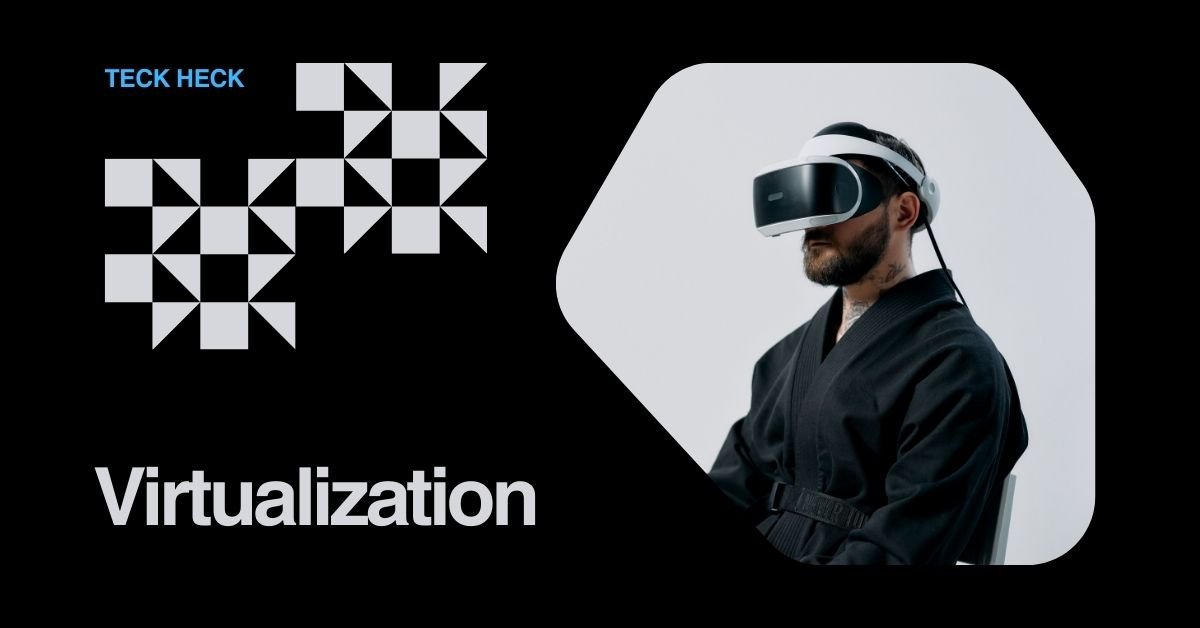
In what ways can virtualization enhance IT infrastructure resource utilization?
IT Infrastructure Revolutionized by Virtualization
Overview of Virtualization
The process of creating a virtual version of a server, storage device, or network resource is known as virtualization. It makes it possible to run several simulated environments or specialized resources on a single physical device. A software layer called a hypervisor usually accomplishes this task by separating the virtual environments from the physical hardware, allowing for more flexible and effective resource allocation.
Around the world, virtualization is now a fundamental technology in cloud computing, data centers, and IT infrastructures. Businesses can increase resource utilization, enhance scalability, and lower operating expenses by abstracting the underlying hardware.
Types:
The most popular type of server virtualization. It entails using a single physical server to operate several virtual machines (VMs). As though it were running on its own dedicated physical hardware, each virtual machine (VM) runs independently with its own operating system (OS) and programs. Typical forms of virtualization for servers include:
Complete virtualization: Every virtual machine (VM) has its own operating system and resources and is totally isolated.
Para-Virtualization: virtual machines (VMs) function independently while sharing resources more directly with the host operating system.
KVM (Kernel-based Virtual Machine), Microsoft Hyper-V, and VMware are a few examples of server virtualization solutions.
Several physical storage devices are combined into a single virtual storage unit through storage virtualization. This makes management easier, boosts productivity, and expands storage options. Even if the actual storage is dispersed among various places, it enables managers to treat all storage resources as a single unit.

Storage blocks from several devices can be combined into a virtual pool using block-level storage virtualization.
The process of merging files and directories from several systems into a single view is known as file-level storage virtualization.
NetApp ONTAP and IBM SAN Volume Controller are well-known storage virtualization products.
To construct virtual networks, network virtualization abstracts a physical network’s resources and services. This enables the operation of several virtual networks on a single physical infrastructure. It improves adaptability.
Virtualization of Desktops
Users can access their desktop environments remotely from any device thanks to desktop virtualization. Virtual desktops are hosted on servers in a data center rather than running operating systems and apps directly on actual PCs. Through a network, users can access their virtual desktops.
One kind of desktop virtualization that houses desktop environments on virtual machines is called virtual desktop infrastructure, or VDI.
Desktop-as-a-Service (DaaS): A cloud-based solution in which a third-party supplier hosts and manages desktop environments.
Citrix Xen Desktop and VMware Horizon are two examples.
The advantages of virtualization
Optimization of Resources
The use of physical hardware is maximized by virtualization. It makes it possible to combine several physical servers into a smaller number of units, which lowers hardware costs and boosts efficiency.
Cost-Effectiveness
Organizations can save money on hardware, energy, and physical space by reducing the number of physical devices needed. Additionally, virtualization lessens the requirement for human hardware management intervention.
Enhanced Scalability
Without the need for new physical gear, virtual environments can be swiftly scaled up or down in response to demand. This adaptability is crucial for companies whose needs change over time.
High Availability and Disaster Recovery
By making it simpler to clone virtual machines to distant locations, it enhances disaster recovery. Compared to real servers, virtual machines can be backed up and recovered far more quickly, guaranteeing little downtime in the event of a breakdown.

Quicker Deployment and Provisioning
Applications, servers, and environments may be quickly deployed thanks to virtualization. The time needed for system setup and updates is greatly decreased by the ability to provision a new virtual machine in a matter of minutes.
Increased Security
By keeping one compromised virtual machine from influencing others, virtual machines can be segregated from one another, improving security. Snapshots are another feature of virtualized systems that can be used to help restore a secure state when necessary.
The Difficulties of Virtualization
Although virtualization has many advantages, there are drawbacks as well:
Complex Administration
When scaling to hundreds or thousands of virtual machines, virtualized systems can become difficult to maintain. To guarantee seamless functioning, efficient management tools and monitoring systems are necessary.
Overhead in Performance
Performance overhead is introduced by the abstraction layer that sits between the virtual environments and the actual hardware. Even while this overhead is usually negligible, resource-intensive programs may detect it.
Issues with Licensing and Compliance
Because software suppliers may charge for each virtual instance of an operating system or application, it may result in licensing issues. In virtualized settings, businesses must be aware of licensing models and compliance needs.
Risks to Security
By separating environments, it can improve security, but it can also introduce new security flaws. For example, a flaw in the hypervisor can make it possible for attackers to move between virtual machines.
Cloud Computing Virtualization
In order to provide on-demand resources like processing power, storage, and networking, cloud computing significantly depends on virtualization. Technologies are used in cloud environments to abstract and manage the physical infrastructure, allowing for the effective distribution of resources across numerous users.
Public Cloud: Infrastructure-as-a-Service (IaaS), Platform-as-a-Service (PaaS), and Software-as-a-Service are among the cloud services that may be delivered thanks to virtualization.

Private Cloud: By enabling businesses to build their own data centers using virtualized resources, virtualization in private clouds gives them greater control and security over their infrastructure.
Hybrid Cloud: This paradigm integrates resources from both public and private clouds, with serving as a link between the two and guaranteeing compatibility.
In conclusion
One fundamental technology that has completely changed the way IT infrastructures are planned, maintained, and used is virtualization. It provides many advantages, ranging from increased flexibility and security to better resource use and cost reductions. It will continue to be a crucial enabler as businesses adopt cloud computing, spurring efficiency and innovation in the IT sector.
The practice of building a virtual version of a server, storage device, or network resource instead of utilizing the real hardware is known as virtualization. You can run several operating systems (OS) or apps on a single physical machine by using virtualization, which maximizes resource usage, increases flexibility, and lowers expenses. The hypervisor, a software layer that stands between the hardware and the virtual machines (VMs), is the primary element that makes it possible. The virtual machines function as separate systems because the hypervisor controls how real resources (such as CPU, memory, and storage) are distributed to them.



